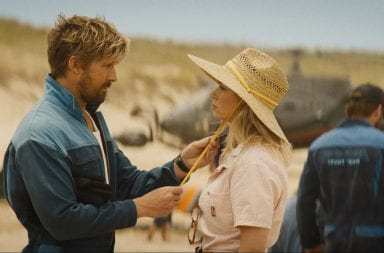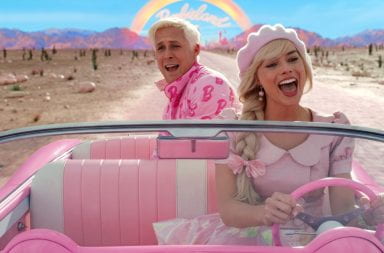Creating a sequel that avoids disappointing fans of a cult classic like Ridley Scott’s “Blade Runner” while also developing a film that will appeal to all audiences — including those who have not seen the original — is a tall task for any director. But Denis Villeneuve delivers one of the greatest sequels of all time and one of the most beautifully shot films in recent memory to create a film that should satisfy all movie junkies in “Blade Runner 2049.”
It is challenging to delve too much into the plot without revealing key plot points. Simply put, the film centers around a new Blade Runner, Officer K (Ryan Gosling), who is sent to track down and retire old replicants who are less obedient than the latest models created by Niander Wallace (Jared Leto). Beyond that it’s challenging to discuss anything else as nearly every other plot point in the film comes with an added twist that builds into the storyline.
Nearly every actor shines in their respective roles. Gosling again proves why he is considered among the greatest actors of our generation in his role as the leading character. Harrison Ford, who played the main character in this film’s predecessor, reprises his role as Rick Deckard, a former Blade Runner, who has gone into hiding following the events of the original. Ford’s performance stands out far more in this film than it has in other reboots such as “Star Wars: The Force Awakens” and “Indiana Jones and the Kingdom of the Crystal Skull.”
While the actors drive the plot in the film, it is the combination of the cinematography and the sound of the film that makes this movie stand above many other in this era.
Minutes into the film, the audience returns to a dystopian Los Angeles in the year 2049, set X years following the first film, that is just as striking as the big city in the original. The cinematographic excellence of Roger Deakins is again apparent in this film, as the 13-time Academy Award nominee teams up with Villeneuve to not only recreate Ridley Scott’s futuristic vision of Los Angeles, but expand on it with the modern technology and visual effects available at their disposal that Scott did not have in 1982. With neon advertisements and flashing colors on billboards and the sides of skyscrapers masking the bleak, gray city down below, Villeneuve’s and Deakins’ Los Angeles effectively builds on the captivating city in the original with improved technology and special effects without overdoing anything.
Right out of the gate, the sound mixing and soundtrack immediately draw the audience in. The soundtrack takes after the original, but rather than simply replicating the exact same soundtrack into the film, composer Hans Zimmer takes some of the familiar sounds from the original and adds in his own twist to the composition. It is loud but not overwhelming like some past Zimmer soundtracks have been, and the sound mixing encompasses the viewers and keeps them locked into the action throughout the film.
It is clear just as soon as the sound is introduced that it will align seamlessly with each emotionally gripping shot in the film. As the audience hears one of the signature ripple effects in the soundtrack the original film was known for, there will often be a similar ripple effect on the screen, creating a harmonious balance between visual and audio effects that keep the attention of the audience locked onto the screen.
The lone, miniscule flaw in the film is the pace and length of the plot. At just shy of three hours, the film tends to drag on through certain storylines and takes some time to reach its conclusion. Though the plot is fascinating and features many twists and turns that keep the viewer interested, there are clear parts where it could have been abbreviated so the film isn’t a marathon.
Nobody ever asked for a sequel to “Blade Runner.” The 1982 classic is considered just that, a classic, and many years of beloved original, stand-alone films being revived and brought into a shoddy cinematic universe for the sole purpose of suckering people into the theaters based on little more than nostalgia has plagued Hollywood for the past several years.
But “Blade Runner 2049” stands out not as only one of the best sequels ever made, but also one of the best sci-fi films made since the original was released. The plot constantly keeps the viewer engrossed — even if it drags on a bit too long — and the sounds, visuals and cinematography make this film a work of art among modern films. Just as the improved technology expands on what made the original film so memorable, “Blade Runner 2049” continues its journey deeper into the themes explored in the original and expand on, now, one of the most fascinating science fiction universes in film.
9.5/10


